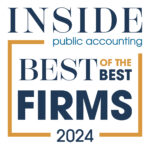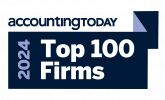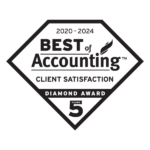There are many complex transaction rules impacting technology companies, including Topic 842: Lease Accounting, which could have a significant impact on a company’s balance sheet.
One of the more complex areas in accounting for leases is the treatment of technology services agreements, including agreements regarding data centers, cloud computing and dedicated servers. Under Topic 842, these types of transactions could have an embedded lease, resulting in the lessee recording a right-of-use (ROU) asset and lease liability.
Definition of a Lease According to ASC 842
When reviewing technology agreements for embedded leases, it is imperative to remember that the definition of a lease under ASC 842 is a contract that conveys the right to control an identified asset for a period of time in exchange for consideration. The most common embedded lease for technology services relates to servers used to store data or operate within a network; however, companies should review all of their agreements to determine if they contain embedded leases.
Identified Asset
For an agreement to have an embedded lease, there needs to be a specified physical asset being used, like a server, for example. The asset can be located either at the customer’s site or at an offsite location owned by the supplier. The key is whether the specific asset can be identified and designated specifically for the customer.
Right to Control
Once it has been determined that there is an identified asset, the next step is to evaluate the right to control. The customer has the right to control the asset whenever they can direct the use of the asset, meaning they can direct what purpose the asset will serve without changing the contract. The customer also has the right to control whenever they will obtain substantially all of the economic benefits from the asset over the term of the contract because they have the exclusive use of the asset. Finally, there is a right to control whenever the supplier does not have substitution rights. If the supplier can substitute or move the asset without the approval of the customer, then the customer does not have the right to control the asset and the asset would not be considered a ROU asset.
In the case of a server or equipment being installed at the customer’s location, it needs to be determined if the asset can be repurposed by the customer or if the equipment is just necessary for the supplier to fulfill the service. If the use of the asset can be directed by the customer to serve a different need or project or if the supplier cannot substitute the asset without customer approval, then there is right to control by the customer and therefore is a lease under Topic 842.
In the case of a server at a supplier’s location, if there is a specific cage or section within the building designated for the customer that cannot be changed without the consent of the customer, then there is a ROU asset. Conversely, if the contract states that the customer will be able to use servers at the supplier’s location but the supplier can select which specific servers and can change the servers throughout the contract term without customer approval, there is not a ROU asset.
Once it is determined that there is a ROU asset, the customer needs to quantify the value of the asset based on the contract payments and record the related asset and liability at the start of the contract period. Depending on the size and number of these contracts, the impact to a company’s balance sheet could be significant.
If you have any questions about lease accounting for an early-stage or startup company, please contact the team at [email protected].
Related Articles
This article is part of a series exploring the complex business challenges startup and early-stage companies may encounter as they grow. Additional articles include:
- Top Accounting Advisory Needs for Emerging Technology Companies
- Best Practices After an Equity Raise for Start-Up Companies
- Five Tax Considerations for Start-up Companies
- Pros and Cons of IPO for Early-stage Companies
- Emerging Technology Companies and the R&D Tax Credit
- Compilation, Review or Audit? What Early-Stage Companies Should Know
About Schneider Downs Emerging Technology Services
Schneider Downs understands the ever-changing landscape and business challenges facing companies focused on emerging technologies and software. Our clients represent a wide range of organizations, from emerging growth companies to large mature companies, and we are well-versed in the unique challenges they face. Our team of seasoned professionals has experience working with emerging technology companies in all phases of their evolution.
To learn more, visit our Emerging Technology page.
About simpLEASE
Built by accountants for accountants, simpLEASE makes the FASB’s Accounting Standards Certification (ASC 842) simple. Designed to solve leasing accounting challenges for organizations of all sizes, simpLEASE is a scalable web-based solution that streamlines the lease accounting process and provides fast and accurate results regardless of whether you have two or two thousand leases.
To learn more, visit our simpLEASE Accounting Software page.





